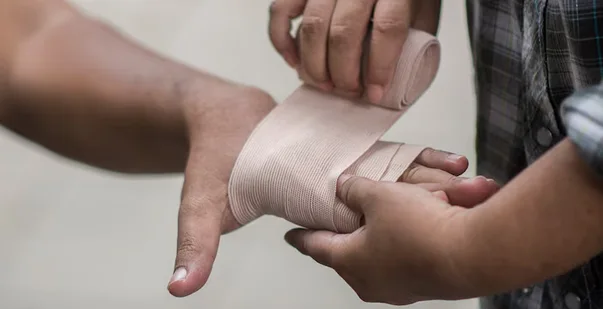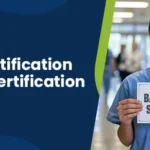Table of content(s)
- Introduction
- How do pressure washers work?
- What are the common injuries and their causes?
- What are the dangers associated with these injuries?
- What are the proper techniques for safe pressure washing?
- What are the first aid tips for pressure washer wounds?
- Conclusion
Pressure washers are powerful tools that are used for cleaning driveways and necks. They may not be much harmful; however, they pose more harm than good. These machines operate at high pressures and exceed 1500 PSI, causing injuries. A brief moment of misuse can be dangerous, leading to deep cuts and injuries.
What makes pressure washer injuries dangerous is that the high-pressure water can inject bacteria and debris into the skin. This may cause infections that may not be visible immediately. Injuries can also affect your body parts, including your eyes. You will be shocked to know that some people have suffered permanent damage due to the high pressure.
Better late than never, it is crucial to avoid these hazards. Be careful and take the right precautions to protect yourself from a pressure washer injury. Keep reading to find out more about the injuries and prevention steps:
Master ACLS Now
Get ACLS certified with confidence
How do pressure washers work?
Pressure washers use a motor-powered pump to create a high-pressure stream of water. This water is then forced through a narrow nozzle, increasing the pressure even more to blast away dirt, grime, and stains. Depending on the machine, water pressure can be adjusted to suit different cleaning tasks, from light-duty household jobs to heavy-duty industrial use.
The machine pulls water from a tap or reservoir, pushes it through a pump where it’s pressurized, and then ejects it through the nozzle at high speed. The strong water stream loosens and removes dirt or debris from surfaces. Some pressure washers also allow the use of cleaning detergents to improve effectiveness for tougher cleaning tasks.
What are the common injuries and their causes?
The high-pressure water can cut through the skin and cause harm. It is crucial to understand the potential injuries and the causes to help prevent accidents. Here are the common injuries that you should be careful of:
- Deep Cuts and Lacerations: The high-pressure water stream can easily break the skin, leading to deep cuts and lacerations. These injuries often occur when the nozzle is held too close to the body or pointed in the wrong direction.
- Puncture Wounds: Pressure washers can inject water, dirt, and bacteria into the skin, causing puncture wounds that may not seem severe at first but can lead to infections. This typically happens when high-pressure settings are used without protective gear.
- Eye injuries: Debris blasted by a pressure washer can fly back and strike the eyes, leading to scratches, abrasions, or even vision damage. Eye injuries often occur when users fail to wear protective eyewear or do not properly direct the spray.
What are the dangers associated with these injuries?
The dangers of a 5000 psi pressure washer injury might appear less serious at first but can cause significant harm if not addressed properly. Here are the dangers:
- Deep Cuts and Lacerations: A pressure water cut can be much more dangerous than cuts from other sources. The high-speed water can also damage underlying tissues, including muscles. Moreover, they carry dirt and chemicals, which might increase the risk of infection. If you do not provide the right treatment, it can spread and require surgical cleaning and stitches.
- Puncture wounds: Puncture wounds from pressure washers are particularly dangerous because they often look minor on the surface, but the force of the water can drive debris and bacteria deep into the body. These hidden contaminants can lead to infections that aren’t immediately visible, with symptoms only emerging later. Such infections, if severe, can result in conditions like abscesses or blood infections (sepsis), requiring urgent medical attention.
- Eye injuries: Eye injuries are one of the most immediate and dangerous risks when using a pressure washer. The high-pressure spray can send debris like tiny rocks, paint chips, or dirt flying at high speeds, causing severe damage to the eyes. Without protective eyewear, these injuries can lead to corneal abrasions, severe irritation, or even permanent vision loss if the debris penetrates deeply.
What are the proper techniques for safe pressure washing?
While using a pressure washer, you should follow a few techniques to prevent accidents. Here are some techniques to follow:
- Wear protective gear:
Always wear appropriate safety gear, including safety goggles, gloves, and sturdy footwear. Long sleeves and pants are recommended to protect your skin from high-pressure water and flying debris.
- Start with low pressure:
When beginning to use a pressure washer, always start with the lowest pressure setting and gradually increase as needed. This will give you better control and prevent accidental damage to surfaces or yourself. High pressure should only be used when absolutely necessary and with caution.
- Maintain a Safe Distance
Always keep the nozzle at least 6 to 12 inches away from the surface you’re cleaning. Holding the nozzle too close can cause damage to the material or increase the likelihood of injury. It’s important to maintain a consistent distance for both safety and effectiveness. - Use the Correct Nozzle
Each pressure washer comes with different nozzle tips designed for various tasks. Use the appropriate nozzle for the job, and avoid narrow-angle nozzles unless necessary, as they can generate excessive pressure, leading to accidents or damage. - Keep the Nozzle Pointed Away
Never point the nozzle at yourself, others, or pets, even when the pressure washer is not in use. Always be aware of your surroundings and ensure that the spray is directed at the intended cleaning area to avoid accidental injuries. - Check the Surface Beforehand
Before starting, inspect the area you’ll be cleaning for hazards like loose materials, sharp objects, or fragile surfaces that could be damaged by the pressure washer. Taking a few minutes to check your environment can prevent accidents and protect both you and your equipment.
Read more: ACLS vs BLS vs PALS
What are the first aid tips for pressure washer wounds?
Pressure washer injuries can be serious, and here are steps to follow if any injury occurs.
- Assess the injury
If the wound is deep, bleeding heavily, or shows signs of infection, seek medical help immediately. - Clean the wound.
For minor injuries, gently wash the area with soap and water to remove any dirt or bacteria. - Stop the bleeding.
Apply pressure with a clean cloth to control bleeding and elevate the injured area if possible. - Monitor for infection.
Watch for redness, swelling, or discharge, and seek medical attention if symptoms worsen. - Get professional help for severe injuries.
For deep cuts, puncture wounds, or eye injuries, consult a doctor promptly to avoid complications.
Read more: What Is A BLS Certification?
Conclusion
Pressure washers are useful equipment, but they can cause injuries when not handled properly. High pressure can cause deep cuts and injuries to the eyes, causing long-term damage. While a pressure washing injury might seem minor at first, they can become severe if not treated well. So make sure you take the right prevention steps to prevent a pressure washer injury and minimize the risk of dangers. In case of injuries, do not delay seeking treatment.







